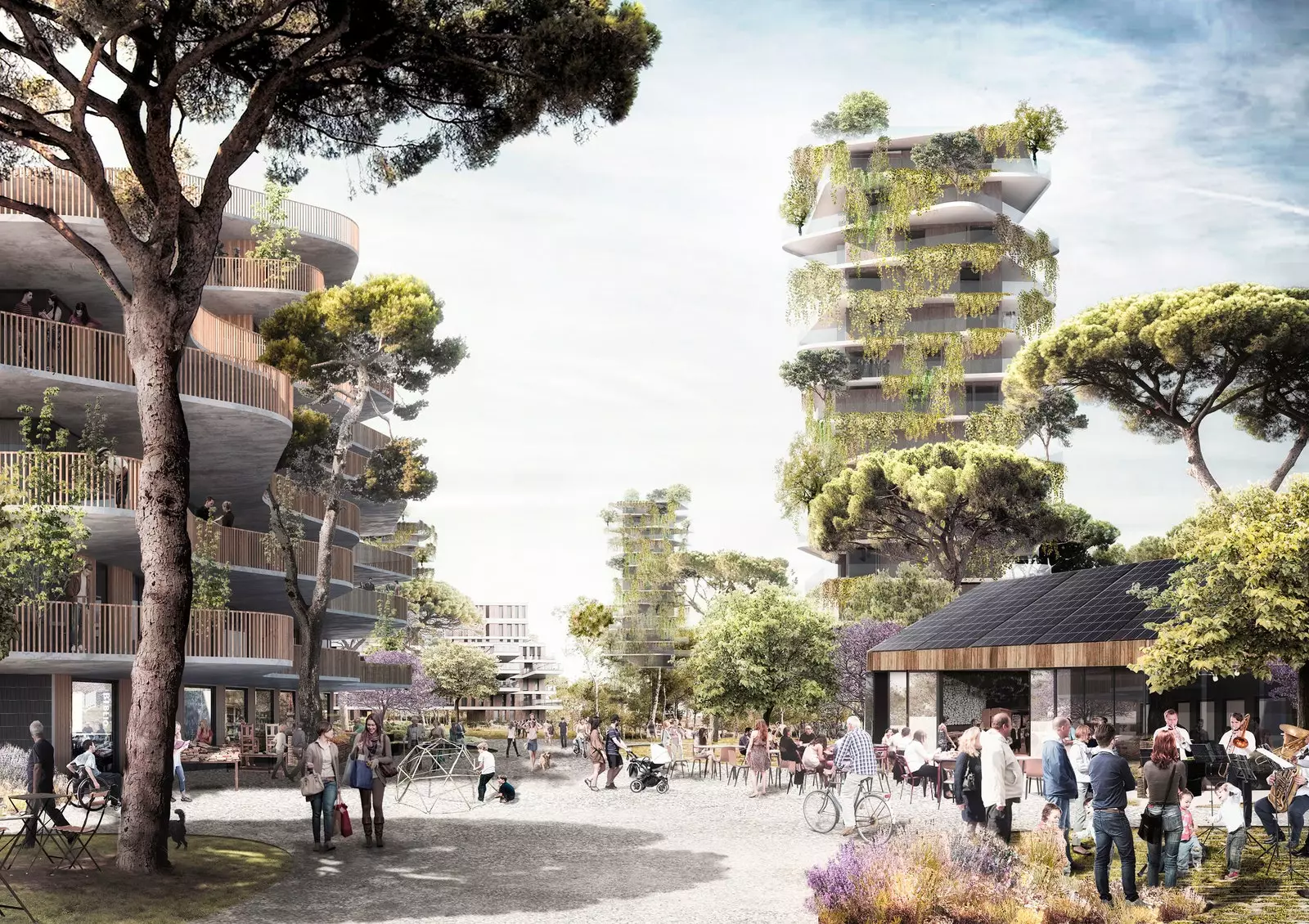
The neighborhood of the future?
The future of the city is the neighborhood . But not the neighborhood as we understand it now, not that neighborhood where you have to take the car to go to the office or shop at the supermarket. The city of tomorrow is the sum of self-sufficient neighborhoods where all essential services are fifteen minutes or less away by bike or on foot.
Carlos Moreno he is the urban planner who has formulated this traditional and avant-garde idea at the same time. The mayor of Paris, Anne Hidalgo , is the policy that has taken on the challenge of putting it into practice in one of the most important cities in the world.
A CITY BY AND FOR THE NEIGHBORHOOD, WITHOUT LEAVING THE NEIGHBORHOOD
quarter hour city It is a proposal that starts from the “chrono-urbanism” , the discipline that studies why do we waste half a life in traffic jams , subway transfers and other exhausting journeys for the body and mind.
If all basic services were a stone's throw away, it would be good for the environment in general and for us in particular. . For this reason, Carlos Moreno, urban planner and scientific director of the ETI Chair at the Sorbonne University in Paris, has modeled a city where we have everything at hand : school, work, the health center, shops, cultural centers and leisure spaces. Everything would be, at most, fifteen minutes away.
Almost as if the city returned to the village, but not quite : “What we want to do is create a decentralized city , get out of the modern city, which is spatially specialized”, Moreno explains to Traveler.es. Namely, forget to work in the center and sleep in the periphery to search a new balance in the neighborhoods and, in the process, reduce forced mobility . The intention is that "people, having this decentralization, reduce the pressure on transport infrastructures."
The urbanites of the city of 15 minutes move by desire Not because they have no other choice. They work a stone's throw from home, shop at the corner store, spend their leisure time in the neighborhood, and only go to another neighborhood when they feel like visiting a particular museum or cheering on their favorite team at the stadium.
Moreno defends that the city of 15 minutes would put an end to other global problems such as mass tourism : “The center of the cities is quite touristy, and we want it to continue to be attractive, but also to create a new quality of decentralized tourism that allows discovering new places that already exist in the neighbourhoods”. That is the essence of polycentric city.
A MASSIVE SLOWDOWN TO SAVE THE PLANET
A world made of quieter cities would be ideal for the environment, especially if in those same cities the local purchase is promoted . But the banishment of the car and the rise of local commerce would not be the panacea to tackle the climate crisis. something more is needed.
That is the opinion of Pilar Vega Pindado , urban planner and member of Ecologists in Action , who sees the need to bring other services closer to homes, especially schools: “ A city that encourages proximity should allow children to walk or bike to school , that they play alone without adult guardianship”. The ecological perspective thus supports Moreno's thesis.
If the city turns to the pedestrian and the cyclist What would be the role of public transport that we use today? Francesca Heathcote Sapey, expert in mobility and connectivity and Executive Director of the Master in Real Estate of ESCP she thinks that the bus and the metro would not lose prominence: “Inclusive solutions must be proposed for those people who cannot ride a bike or who simply do not want to walk. Therefore, public transport would play an even more important role and would need to be expanded and improved, ensuring that inclusivity and accessibility.”
Vega agrees with the expert, and concludes that "the car would be a simple guest in the use of public space."
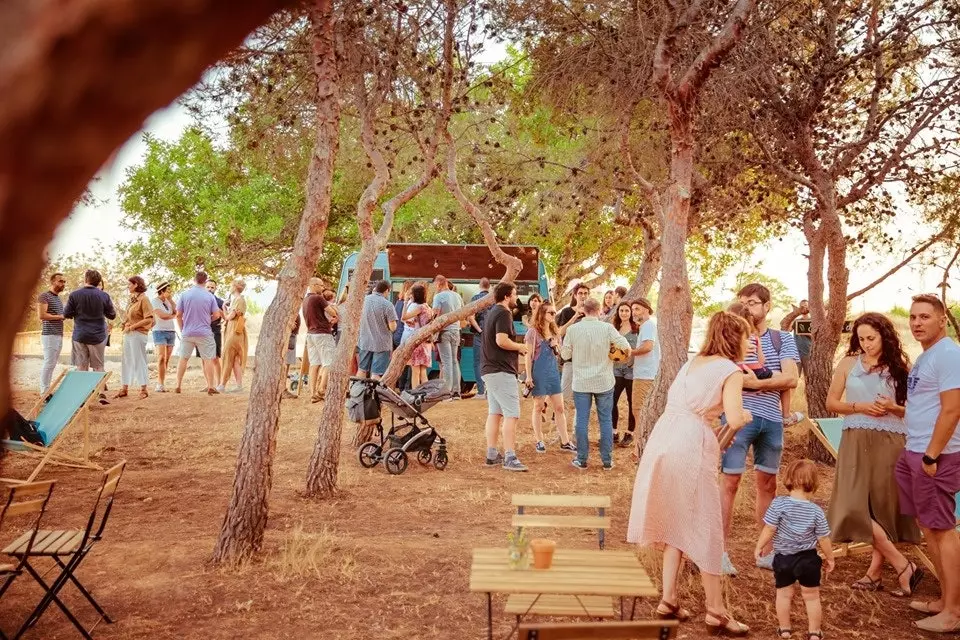
The future of neighborhoods?
A 'DEMOBILIZED' LIFE, A HAPPIER LIFE
“The best mobility is the one that is not necessary” , affirms Marta Domínguez, professor of Urban Sociology and coordinator of the Urban Sociology working group of the Spanish Federation of Sociology. Heathcote Sapey agrees. : “Currently, for many, moving around is becoming a daily nightmare, either stuck in the car or in a subway car”.
The obligation to spending several hours a day on transportation has negative psychological effects . The list that Domínguez lists seems endless: stress, loss of free time, decreased hours of rest… and social uprooting . “It makes you have a more superficial, more impersonal relationship with the city; it makes you reduce yourself to your home and the city, instead of promoting intermediate spaces, such as the neighborhood, which would be the spaces of sociality”, she warns.
Moving less means living better r. The mind is at peace when our life unfolds in the place we inhabit, instead of having to chase it with our tongues out in opposite parts of the city. "Demobility" also strengthens neighborhood networks and strengthens our sense of belonging.
Although getting along with the neighbors doesn't happen for the mere fact of being close to them: “I can live next to the other without having a relationship with him, even having a bad relationship with him. Thus, we must not only speak of the spatial, but of the change of values ”, clarifies the sociologist.
In aspects like this, the transgressive nature of the city of the quarter of an hour comes to light, which defies some established canons to achieve long procrastinated goals , how to revive the good vibes between neighbors or achieve the desired reconciliation between work and personal life.
A) Yes, this concept of city would favor the most disadvantaged . Domínguez points out that mobility is an indicator of inequality between social classes because “ the lower classes are forced to live and work where they can . And the upper classes tend to live near their places of relationship and work". An inequality that is also reflected more acutely in women, who "tend to choosing jobs closer to home because they are more linked to the field of reproduction , and they make many more trips in the city than men, who only make two trips and farther”.
Therefore, it is not enough to fragment the city according to its current distribution: Moreno himself recognizes that segmenting neighborhoods as they are today could lead to the creation of ghettos, a vision shared by Domínguez. “ It is not fair that the popular neighborhoods are to the northeast and the rich neighborhoods to the west ”, synthesizes the urban planner.
For the author of the project the key is in “ rebalance neighborhoods ” through resource endowments in impoverished areas and “mix the population” with actions such as the construction of social housing in the highest income neighborhoods.
The sociologist, for her part, believes that a stock regeneration : “It supposes a change of educational paradigm in the respect and consideration of nature, of proximity, of being and not having, of the relationship in the city, of living together and not coexisting”.
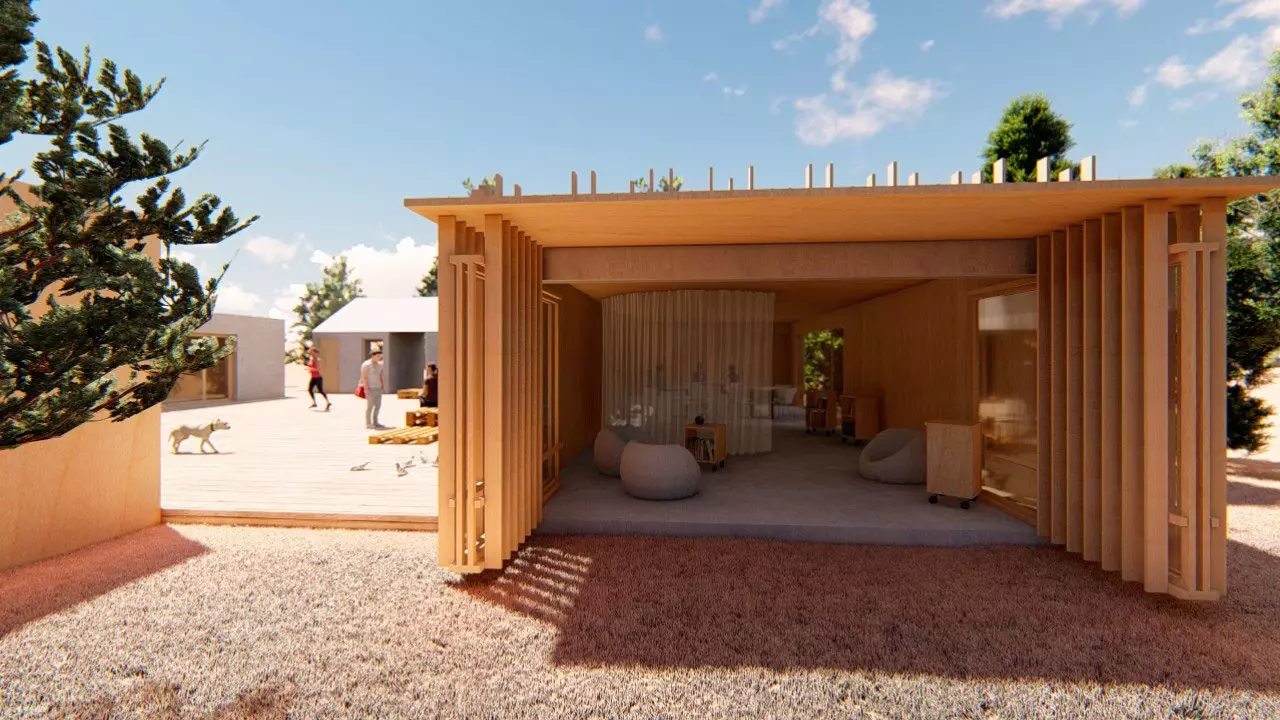
Renders of La Pinada Lab, the open innovation space for sustainability
WILL THERE BE 15-MINUTE CITIES IN SPAIN?
Some Spanish cities have promoted projects aimed at demobilizing the metropolis . Examples of this are the “superblocks” of Barcelona and Vitoria , strategically designed to discourage road traffic and keep cars away from places frequented by pedestrians.
Moreno sees in Pontevedra a clear candidate to become a city of 15 minutes, due to its small size and because it is under the command of a mayor's office in favor of movement on foot. The plain of Valencia also makes the Levantine city friendly for walking and cycling.
Precisely in the Valencian municipality of Paterna is brewing the first eco-neighborhood in Spain , devised by the entrepreneur Iker Marcaid , who defines it as “an ecological urban project that aims to reduce the impact of the environment , and not only that, but also create social value through an active and healthy community, where we can help them live in a more sustainable way”.
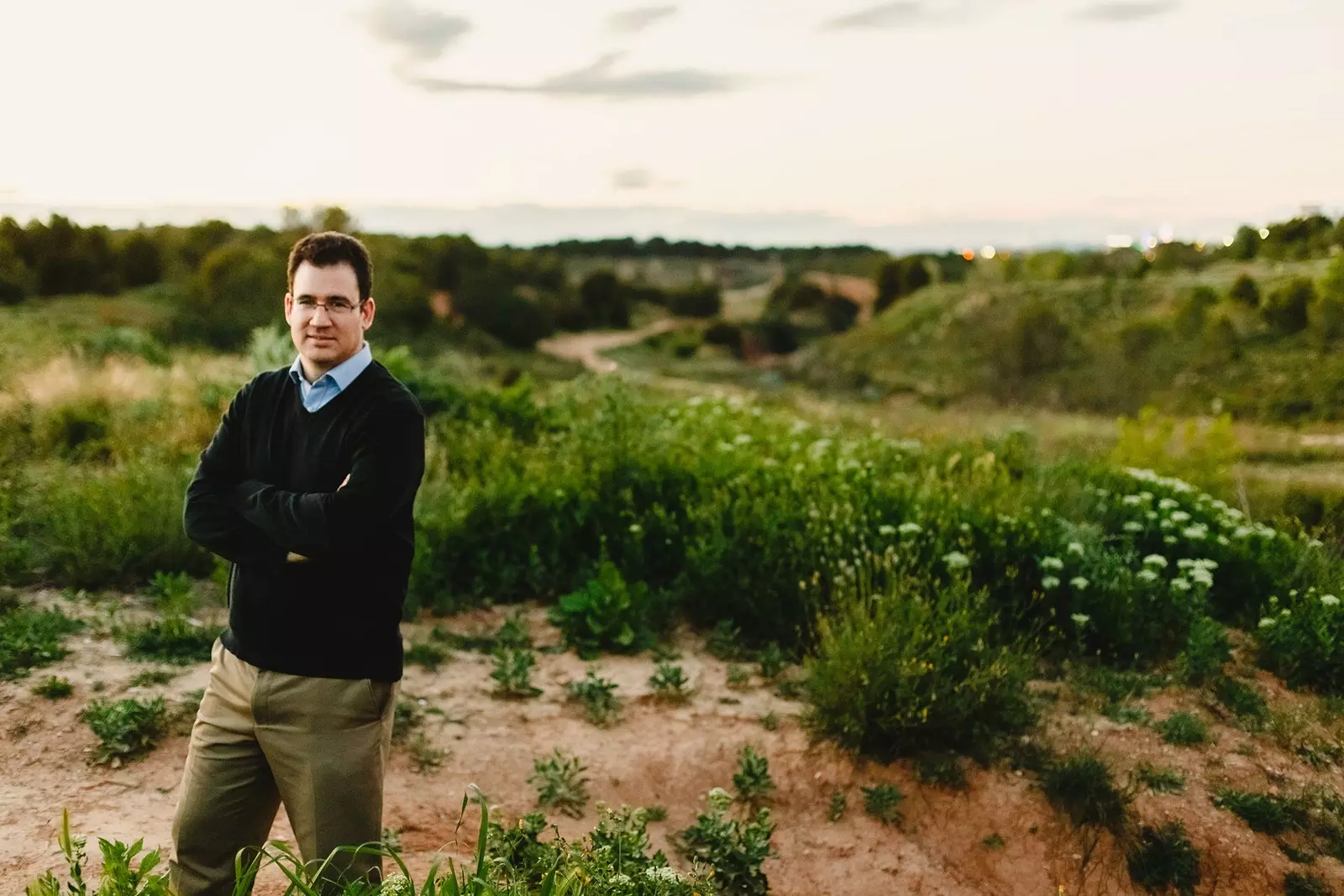
Marcaide devised La Pinada
La Pinada neighborhood it will be the future home of a thousand families who are currently involved in the design process. As in the city of 15 minutes, the eco-neighborhood is designed to minimize mobility, but without becoming isolated . Mercaide believes that La Pinada "could be a great opportunity as a link between the different surrounding neighborhoods that are now disconnected."
Another point in common between both projects is that little by little they are becoming a reality, although there is still time for them to be finished. Paterna's eco-neighbourhood already has play and restaurant areas; the city of the quarter of an hour, with experiments carried out in the 18th and 19th districts of Paris , depends on what the mayor of the French capital renews her mandate next June.
After all, Moreno understands its 15-minute city as a "roadmap" to inspire the urban development of the future . But, for it to work, first you have to guarantee the material conditions in all the neighborhoods and spur the change in values that Domínguez talks about. It will be then when neighborhood life breaks through.
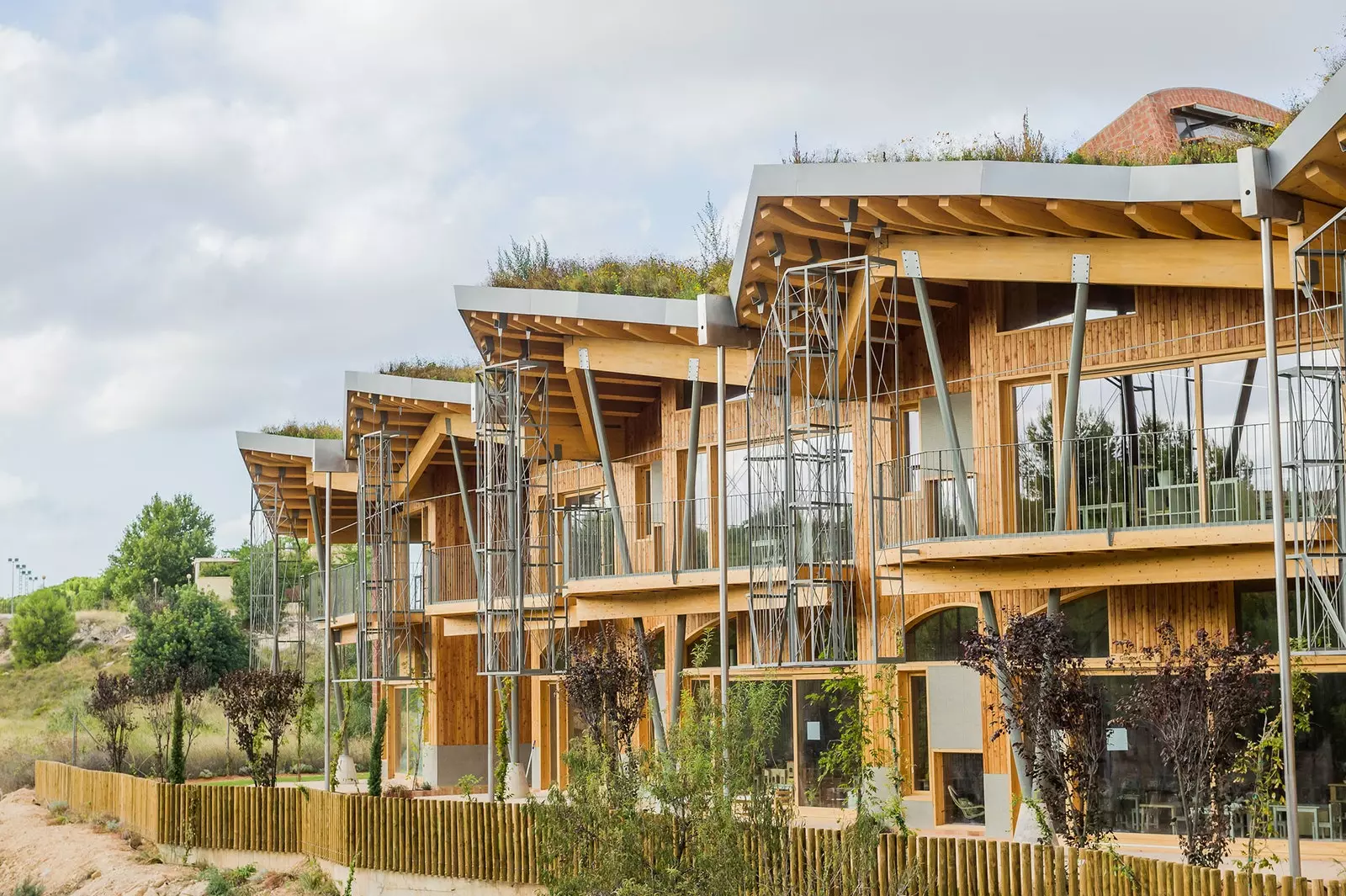
Imagine Montessori School in the neighborhood of La Pinada
